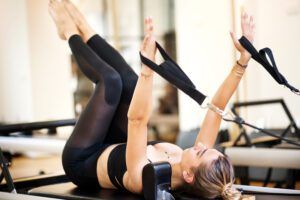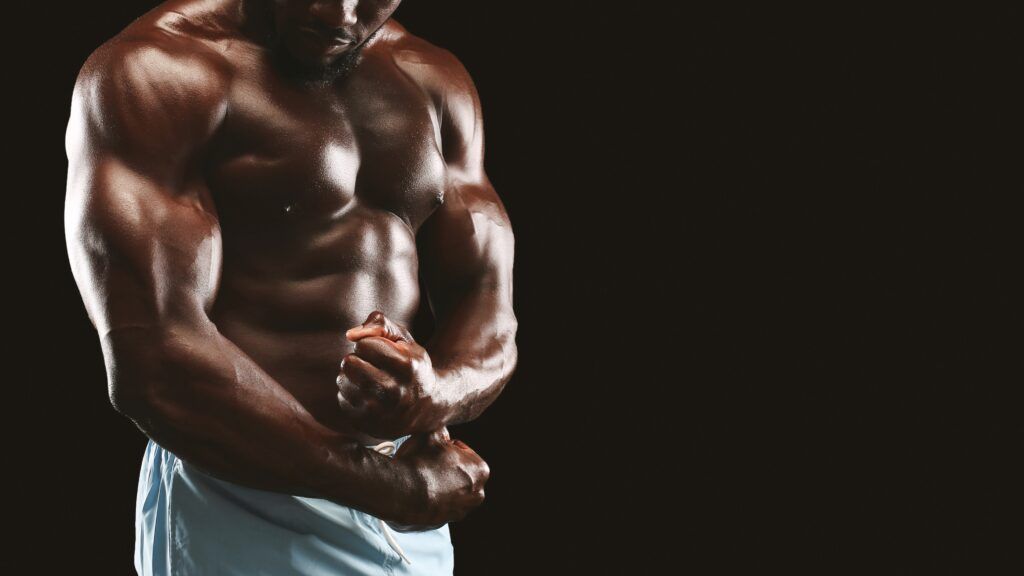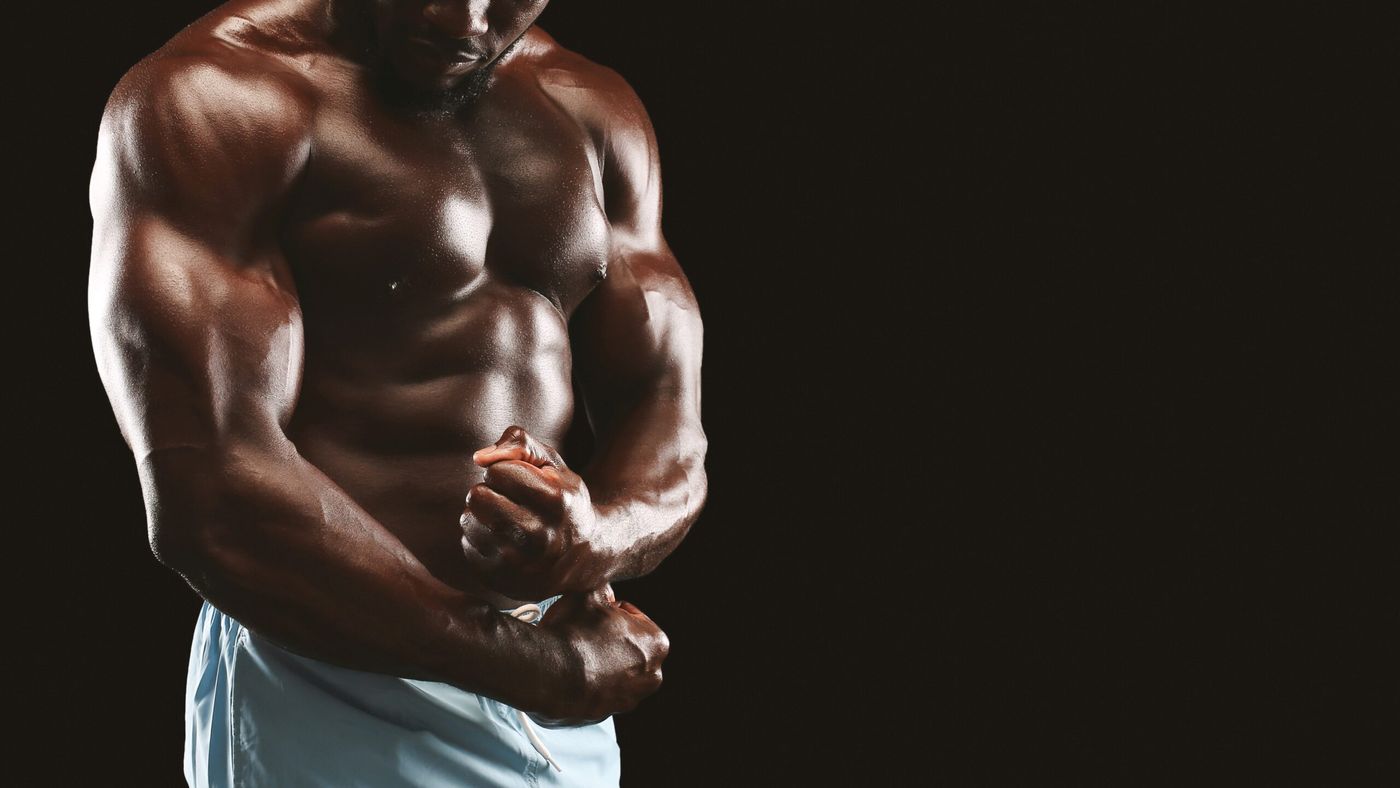Are you after a more defined chest?
Are you looking for gains? Well, look no further – cable chest workouts are the way to go! A good cable chest routine can be an effective and efficient way to strengthen and tone your chest.
Yet, it is important to ensure that you have proper form when doing these exercises to maximize your results. In this article, we will discuss what you need to know to sculpt your chest with an effective cable routine.
Chest Sculpting Basics
Are you looking to sculpt your upper chest with an effective cable routine? If so, then you are in the right place. There are a few basic tips and exercises that should be considered when planning out your chest sculpting routine.
By incorporating these exercises into your workout regimen, you can strengthen, tighten, and tone the muscles of your upper body for a more aesthetic appearance.
First things first, make sure to warm up before beginning any exercise routine. This will help to ensure that no more strain than necessary is put on the muscles during exercise and reduce the risk of injury.
Once warmed up, select a weight for your cable chest exercises that allow for a full range of motion without straining too much or causing discomfort
A good starting point would be around 15-20 lbs relative to user strength. If you are a beginner, we would recommend that you start with the lightest load possible and add more weight as your strength increases. If you are an experienced lifter, start with the recommended weight of 40 – 60 percent of your max.
Importance of selecting the right exercises for your fitness level and goals
The pectoralis major muscle, located in the upper chest region, can be effectively trained using a cable machine. When selecting the right workout, it is important to consider your fitness level and goals.
Beginners should focus on building proper form and posture while performing movements that involve pulling or pushing against resistance.
It is also important to ensure that you are able to complete all repetitions of each set with good form before increasing intensity or weight load.
For those looking to increase their strength and build overall muscular endurance, heavier weights, and fewer repetitions should be implemented during the exercise session. This type of workout should still display good form throughout each repetition, which will help prevent injury while maximizing gains from performing the movement.
Pro tip
When it comes to weight training, proper form is essential for achieving optimal results and avoiding injury.use proper form to avoid injury.
A cable press over a bench press
can be a great option for those looking to enhance their workout routine while still displaying good form throughout each repetition.
The cable press utilizes cables connected to a plate load or pulley system, which provides resistance in any direction so that users can achieve a greater range of motion during the exercise. This allows them to move the weight in multiple directions and target multiple muscles at once.
Furthermore, the cable’s stability ensures that the user will have better control over weight and be able to prevent injuries due to incorrect positioning or dropping of weights.
The cable position also helps keep the body in an upright posture which reduces stress on lower back muscles, shoulders, and joints as opposed to traditional bench press exercises where users must arch their backs for stability when pushing up against heavyweights.
Dumbbells vs cables for chest gains
When it comes to chest training, there are two types of equipment that stand out from the rest: dumbbells and cables. Each has its own unique benefits for building a strong, muscular chest.
Using dumbbells for chest exercises is great for developing strength in your pecs. As you can use both arms independently, you’ll be able to really focus on developing each side evenly. In addition, using a dumbbell allows for more range of motion and can help you target different muscle groups within the chest area.
Cables offer an advantage when it comes to focusing on certain areas of the pecs that may be lagging behind or require more attention. You’ll also find that cables allow you to use less weight while still getting good results due to their continual tension throughout the entire exercise.
Cable chest workout equipment choices
Equipment plays an important role in any exercise program, and chest cable workouts are no exception. These exercises require the right type of equipment for effective performance and results. The good news is that three main pieces of equipment are used for this type of workout: cable machines, resistance bands, and dumbbells.

Resistance bands provide versatility as well as portability – they can be used anywhere from a home gym setting to a commercial gym setting. And are one of the most popular equipments used for strength training. Whether at home or in a gym, They offer another option to target your chest muscles. Cable machines, dumbbells, and other tools are often used for chest exercises, but bands provide a unique variation that can take your chest workout to the next level.
Setting up the Cables
Your chest workout is an important part of any strength training program. A personal trainer can help ensure that you are setting up the exercise correctly so you get the maximum benefit from each repetition.
To begin, adjust the pulley height to its highest setting and attach a D-handle to it. If you have access to different handles, select one that allows for comfortable gripping and a full range of motion during your set. Then attach a rope handle or stirrup handle to the low pulley at ankle level or slightly lower. Lastly, determine how much weight is necessary for your workout; usually, between 10-15 pounds is sufficient depending on your fitness level.
Understanding the Right Exercises
Achieving a broad, chiseled chest with definition in all the right places requires you to understand the right exercises and their correct execution. For those looking for an effective cable routine that will give them a strong and impressive chest, here are some key elements to consider when crafting your own cable workout.
The primary focus of your cable routine should be on achieving the most muscle growth while also developing strength and stability. Exercises such as standing cables fly, cable cross-overs, and incline cable presses are a must in your workout plan as they work many muscles at once which leads to enhanced muscular growth.
Additionally, it’s important to keep proper form throughout each exercise by keeping your back straight and pushing or pulling against resistance until reaching full contraction to maximize results.
Finally, it’s important to pay attention to the amount of weight being used during each exercise. Too much weight can lead to injury, while too little won’t produce as effective results. Start with a lighter weight and add more as your strength increases.
Exercising with the right amount of resistance is key to seeing results and avoiding injury. Without enough resistance, it can be difficult to stimulate muscle growth and strength. However, using too much weight can lead to serious injuryor strain on your muscles.
By paying close attention to the amount of weight used during each exercise and adjusting it based on your fitness level, you can ensure that you are getting the most out of your workout and minimizing the risk of injury.
For safety reasons and faster results, it’s important to pay attention to how much weight you’re lifting during each exercise session.
Cable Flys
A properly executed cable routine can be as effective as a free weight exercise in helping you achieve the results you want. Before embarking on a cable routine to build up your chest, it is important to understand which exercises are best suited for this task.
The most used exercise for working the chest with cables is called the “cable fly.” This exercise involves using two handles attached to cables that move along pulleys mounted on either side of an adjustable frame or cable machine. To perform this exercise, begin by standing upright between both devices with one handle in each hand and arms outstretched parallel to the floor.
The cable chest fly is essential for any beginner’s weight training regime. It is important to understand how to perform a correct cable fly so that you can get the most out of your routine.
Firstly, it is important to make sure that when performing the exercise, your arms are slightly bent throughout the entire movement. This will help ensure that you are targeting your pectoral muscles correctly, and as a result, you will get the maximum benefit from each repetition. Secondly, when performing the cable fly it is beneficial to move slowly and with control throughout both concentric (lifting) and eccentric (lowering) phases of movement.
Cable press![]()
The Cable Bench Press is an effective alternative exercise to conventional chest presses using weights, and it’s also functional as it strengthens the muscles across the body. It can effectively be done using cables at different incline angles(incline bench or decline bench).
For beginners, the proper form for a cable chest press is essential for maximizing effectiveness and avoiding injury.To ensure proper form, start with your feet shoulder-width apart and your back straight against the bench throughout the entire movement. Then grip the handle firmly with both hands and slowly pull it towards you in a smooth motion while keeping your elbows close to your body. Once you reach chest level, pause briefly before pushing outward in a slow, steady motion until you reach full extension of your arms.
For best results, aim for three sets of 10-12 repetitions each time you perform this exercise. A lower rep range of 4-6, will help with faster gains.
Cable crossover
Cable crossovers are a great way to add variety to any weight training routine. It is important to understand what a proper crossover entails, and how it can help activate and build muscle.
An effective exercise for strengthening the chest, shoulder, and arm muscles. To begin, stand in the center between two high pulleys attached to either side of a cable machine. Step forward with one foot and grasp each handle with both hands. Keep your arms extended outwards and bend slightly at the waist forming a “T” shape with your torso as you focus on keeping your back straight throughout the exercise. Engage your core muscles and bring both arms together in front of you at chest level in a controlled motion while exhaling deeply. Maintain proper form as you slowly return to starting position while inhaling deeply.
Muscles worked are the chest, triceps, shoulders, middle chest, and upper back by using high-tension cables. The exercise involves bringing the cables across your body in an arc movement while standing or kneeling. This requires you to keep your core tight while maintaining good posture throughout the entire movement. Proper form helps ensure that you are activating the correct muscles while avoiding injury.
When first starting out with crossovers, begin with light weights and focus on slow controlled movements rather than lifting heavy loads quickly. This will help you develop the proper technique needed for this exercise before progressing to heavier weights for more advanced moves.
A cable incline bench is an exercise machine that serves multiple purposes, making it a popular choice for many gym-goers. With adjustable weights and angles, it can target various muscles in the upper body depending on how it is used.
The use of multiple planes of motion during this cable exercise increases muscular engagement as well as improves functional strength and stability throughout your upper body. It also helps reduce any chances of injury due to stabilizing muscles being activated in order to keep you balanced on the bench.
Benefits of Cable Routines
1. Cable workouts offer multiple benefits compared to free weights. The first benefit is that cable routines are generally safer than free-weight activities, as they produce less risk of injury due to the fixed planes of motion and the possibility for better muscle activation. This allows users to exercise with greater control, reducing their risk of straining or pulling a muscle.
2. When done correctly, can be a great way to build a massive chest. In addition to targeting the larger muscles of the chest, cable exercises also engage smaller stabilizer muscles for increased activation and stabilization. As such, cable exercises are an ideal choice for those looking to build strength and size in the chest area.
3. One of the primary benefits of using cable exercises is that it works for multiple muscle groups at once. For example, movements like crossovers work both the pectoralis major and minor muscles along with the deltoids. Furthermore, proper form and technique further increase the effectiveness of these moves by activating more muscle fibers than traditional isolation exercises alone. Additionally, because you are able to move freely without being limited by gravity or weight plates, you are able to increase stability while performing these moves which helps target more muscle groups than just your chest.
4. Finally, cable routines require less coordination when compared with free weights since the user does not have to counterbalance or stabilize any additional weight during movement.
Common mistakes to avoid.
When doing cable chest exercises, there are some common mistakes that should be avoided to ensure you get the most out of your workout. One of these mistakes is using momentum instead of muscle activation to move the weight. This can lead to an incorrect form and a decrease in results.
Additionally, not using enough weight or progressing in weight too quickly can mean that you’re not having any real effect on your muscles. This is especially true if you’re looking for increased muscle growth as this requires higher levels of resistance than just toning.
Another mistake to avoid when doing cable chest exercises is not focusing on the squeeze at the end of each rep or set. This squeeze helps activate the targeted chest muscles, increasing the strength and tone in those areas while also helping with range of motion and stability.
Tips for incorporating variation into your routine.
Struggling to maximize gains with your current cable chest routine? Adding some variations can make all the difference. Try these tips to change up your workout and keep boredom at bay while ensuring you’re pushing yourself. First, switch up the angles.
Doing pec exercises with different angles will target your muscles from different directions and help build a balanced physique. Adjust the cable position by varying it between low, mid-level, and high – this will increase resistance levels and add variety to your workouts.
A great way to switch things up is to use unilateral movements such as one-arm cable flies or single-arm presses. These exercises need stability in order for you to successfully complete them, increasing difficulty and making them more challenging for building muscle strength than traditional bilateral exercises.
FAQ
Which cable chest exercise is best for the chest?
When it comes to chest exercises, the cable fly and cable press are two of the best options. The press can be done in several positions from incline to decline, allowing you to target different muscles in the chest. This exercise is great for working multiple muscles at once, as it allows you to move through a full range of motion.
Additionally, the cable fly is an excellent choice for targeting the inner chest muscles. It requires you to use your arms independently, which helps to isolate each side of your chest and build strength in both areas. Both exercises are effective for building strength and size in the chest muscles, so it’s up to you which one you prefer.
Which cable workout works the lower chest?
The lower chest is an important muscle group to target in order to build a balanced physique. It can be tricky to target the lower chest, but there are several cable exercises that can help you achieve optimal results.
The most effective cable exercises for working out the lower chest include the low-to-high crossover fly, standing cable flies and incline cable flies. The low-to-high crossover fly involves holding a cable in each hand with arms stretched out wide at shoulder height and then crossing them over one another in front of your body before returning to the starting position. Standing cable flies involve holding two cables with arms extended straight down and then bringing arms up towards each other until they meet at chest level before returning to starting point.
Why You Need to Do Cable Chest Workout?
Cable chest workouts are a great way to increase your overall strength and tone your upper body. With the right cable chest exercises, you can target both your pectoral muscles and triceps for maximum results. Not only do cable chest workouts improve performance in sports activities such as basketball, volleyball, and football, but they also help improve posture.
Using cables when working out gives you a stable platform to perform exercises with weights without putting stress on your joints or ligaments. This is especially beneficial if you’re recovering from an injury or focusing on rehabilitation as it helps strengthen the targeted muscle groups while avoiding strain on other parts of the body. Cable chest exercises also help promote muscular balance throughout the body by creating a stronger stabilizing core in addition to strong arms and chest muscles.
Conclusion
Cable workouts are a great way to maximize gains and build strength. To make sure your workout is as effective as possible, you should focus on proper form, nutrition, and rest.
Proper form during chest training can help you get the most out of your workout. Make sure your body is in alignment and that the cable motions mimic natural movement patterns. Take each rep slow and control the entire range of motion for the best results.
In addition to proper form, nutrition plays an essential role in helping you reach your goals. Eating a balanced diet with plenty of protein helps fuel muscle growth while providing energy for intense workouts. And it’s important to get enough sleep; this gives muscles time to repair and recover after a tough session so they can come back even stronger next time!




